I'm trying to use a photodiode to measure light levels via an ADC on an ATMega168. I've got the microcontroller code working properly (measuring values on a pin and reporting it as an led brightness) but I'm having trouble getting the photodiode to report a voltage dependent on light levels.
I see that I could accomplish this with an op amp (here) but I'd like to be able to do this without an op amp if possible. I have a 5 volt source and I'd like to make the photodiode spit out values between 0 and 5 volts. Is there a crafty circuit I could use for this purpose that doesn't require an amplifier? I'm asking this question because I'd like to know how to use a photodiode for this purpose (I don't want to use an LDR). Thanks!
edit
Oh yeah, here is the datasheet for the photodiode I am using.
